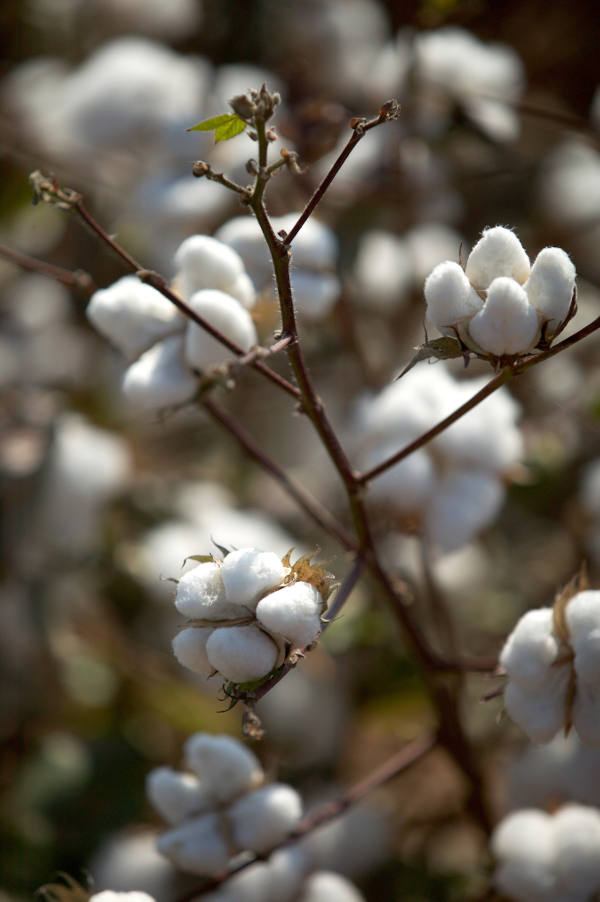April 12, 2013

Oklahoma producers whose wheat acreages have been damaged considerably by recent late-in-the-season freezing weather are making decisions about how their operations might best recover.
For producers in the state’s cotton-growing region, rotating failed wheat acres to cotton may be the answer, said Randy Boman, research director and cotton Extension program leader with Oklahoma State University’s Southwest Research and Extension Center in Altus.
“Lint prices are good at this time, but many producers tend to overlook seed income,” he said. “Gin-run cottonseed recently has been of high enough value to cover ginning costs, while also returning money back to the grower. In addition, a cotton rotation could enable growers to diversify wheat weed and disease management programs.”
In terms of overall crop rotation benefits, cotton varieties with Monsanto’s Roundup Ready Flex and Bayer CropScience’s Glytol traits allow full season over-the-top glyphosate applications. Varieties with the Liberty Link trait also have full-season tolerance to Liberty herbicide, which can be extremely beneficial in terms of broad spectrum weed control.
“Additional residual herbicides also should be included in a cotton weed management program,” Boman said. “Producers who are planning to plant other crops in 2014 should carefully note any potentially limiting crop rotation restrictions per the respective herbicide label.”
Should producers opt to graze out or cut and bale existing wheat forage, they can prepare the fields for planting cotton. Late April and May rainfall is badly needed to replenish subsoil moisture across much of western Oklahoma – particularly in the southwestern part of the state – in order to make this a viable option.
If you are enjoying reading this article, please check out Southwest Farm Press Daily and receive the latest news right to your inbox.
For insurance purposes, far southwestern counties of Oklahoma have a non-irrigated final planting date of June 20; the date is typically June 10 for most other Oklahoma counties.
“An important consideration concerning dryland production would include timely termination of the wheat with glyphosate,” Boman said. “Crop insurance eligibility and coverage in non-irrigated cotton following non-irrigated wheat is complicated, so the producer should visit with a crop insurance agent for clarification of pertinent issues.”
Additional information about cotton production in Oklahoma is available at http://cotton.okstate.edu and http://ntokcotton.org via the Internet.
“As agricultural producers and stewards of the soil, we continually seek improvements in management,” said Harvey Schroeder, a producer from Frederick who serves as executive director of the Oklahoma Cotton Council. “Many times we have to take advantage of unexpected opportunities to do so. Crop rotation is one of those improvements.”
For the past couple of years, Oklahoma’s cotton-planted acreage has increased somewhat above the historical average of approximately 230,000 acres. Additionally, over the last few decades improved varieties with transgenic traits have increased lint yields in dryland production by approximately 70 percent, while irrigated yields have nearly doubled when compared to production levels in the 1980s. Fiber quality also has improved substantially.
In February, the National Cotton Council’s early season survey placed 2013 U.S. cotton acres at 9.01 million. Since that time, world cotton prices have moved into the mid-80 cent range, with a few spikes into the 90-cent range. Several leading economists have indicated that a softening of corn prices has helped make cotton more profitable and competitive.
The Southwest Research and Extension Center is part of OSU’s Division of Agricultural Sciences and Natural Resources, and operates under the auspices of the division’s two state agencies: The Oklahoma Agricultural Experiment Station system and the Oklahoma Cooperative Extension Service.
You may also like:
PCG president, executive VP see challenges for cotton
Cotton Incorporated’s Kater Hake: Reasons for optimism exist for cotton…
You May Also Like




